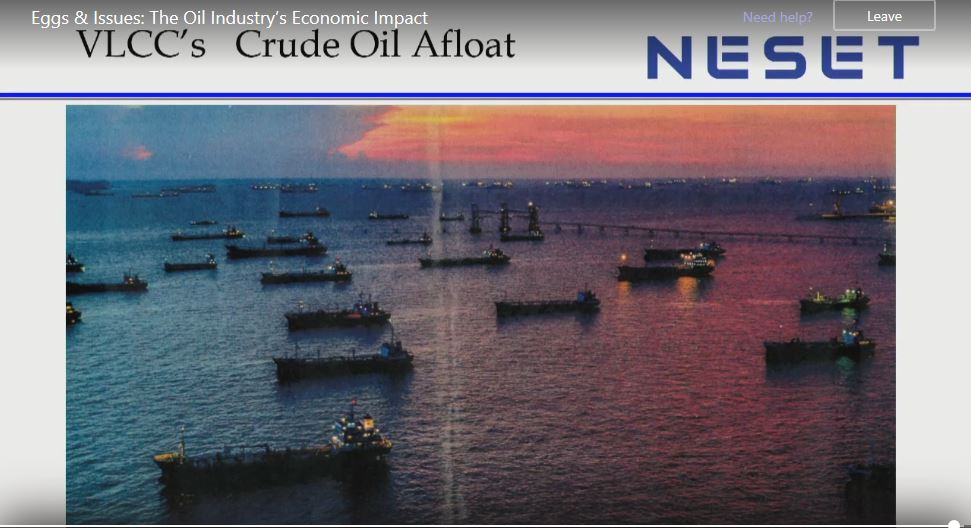-
Overview of the impact of oil in our region
-
Overview of the impact of oil in our region
Just one day before July’s Eggs & Issues on the oil industry’s economic impact on our region, news broke that a federal judge had ordered the Dakota Access Pipeline to shut down and be drained—an announcement that made this discussion that much timelier and relevant. In response to the judge’s ruling, U.S. Senator Kevin Cramer commented that, “It’s absurd both technologically as well as from a policy standpoint ... I believe the judge has grossly outpaced his jurisdiction and his authority.”
Cramer also provided an overview of the oil and gas industry, noting that we’re in for a rough ride for a while, but good news is on the horizon as we start to see and an upswing for our general economy and crude oil prices make a modest recovery. “It’s really important in places like North Dakota and the Bakken, just like our family farms, for us to maintain our diversity of smaller companies,” he said. “It’s important to our national security, our own [state] economy and the environment.”
This month's panelists:
Kathy Neset of Neset Consulting, who works with various oil, gas and service companies that support our smaller towns and our economies, explained some of the technical and geological components of the Williston Basin Deposition and Bakken Formation. In reference to the phases of oil and gas operations, she stated, “The upstream is really what we are doing here in Western North Dakota, this is where the drilling rigs and production is, this is getting the oil from the subsurface up to the surface.”
As it relates to the capture of natural gas in the drilling state of the operation, “North Dakota is making a lot of progress capturing this natural gas… we’re at 88% capture of that gas,” Neset said. “There is a lot of work to be done in utilizing that gas right here in North Dakota, whether in power production or something different, but it’s significant and important.”
Ron Ness of the ND Petroleum Council shared just how much ND depends on the oil industry, stating, “For every dollar less that we receive per barrel of oil in North Dakota, [it’s a negative impact of] $40 million a year to the state’s budget … oil and gas production taxes alone account for 50% of our state’s revenues.” In response to the judge’s order regarding DAPL, Ness said: “By shutting down this pipeline, what you’ve really done, in addition to the 570,000 barrels of Bakken, American and North Dakotan made oil a day that travels through to the Louisiana gulf coast, which at $40 a barrel [the pipeline] is the safest, most reliable, state-of-the-art technology in the country, and the only ETP pipeline that has its own monitoring center…the ramifications on the market are significant.”
Discussing the future of the Bakken, Ness stated: “I think what this has taught us is that the world is our competitor; it’s not just Texas…we have to continue to get better, lower our costs, value the technology, and we’re going to need the brain power of the entire state of North Dakota, workforce training programs, the energy industry…we’re in a battle for survival as an energy industry and really as a producing state.”
Rich Wardner, ND Senate Majority Leader, broke down the new oil production forecasts, which occurred before the ordered shutdown of DAPL, and how the decrease in price per barrel is estimated to have a $1.56 billion loss in revenue to the state of North Dakota. “The new projects have us looking at about $2.7 billion [in revenue] and we are looking at about $1.5 billion in loss to the state of North Dakota in revenue,” he said. “If this goes on for a long period of time, that differential loss is going to get larger and going to affect us more negatively.”
Due to the revenue decline, it’s estimated that the oil-based constitutional funds (Legacy, Common School, Foundation Aid Stabilization and Resources Trust) will experience a drop of roughly $769 million, political subs and oil producing counties will receive an estimated drop of $237.4 million, smaller dedicated funds (Oil & Gas Research, Abandon Well, Heritage, Lignite, Disaster Relief, and State Energy) will experience a differential loss of roughly $24 million. Additionally, the dedicated funds (General, Tax Relief, Budget Stabilization, Lignite Research, Disaster Relief and Municipal – Larger Cities) are expected to fill, at least prior the DAPL decision, with the other dedicated funds (Strategic Infrastructure Investment (SIIF) #1, Prairie Dog, Airport and SIIF #2) not expected to fill leading to an estimated differential loss of $535.1 million. Ultimately, Wardner said, “The state is going to be hustling as far as revenue losses because of the oil tax decrease.”
The panel also took questions from the audience, touching on upcoming potential COVID-19 legislation, more information regarding the DAPL decision, potential usages of the Legacy Fund, and the important work NDSU and UND are doing for oil and gas industry research developments.Tell a Friend
-
A catalyst for growth and prosperity.



